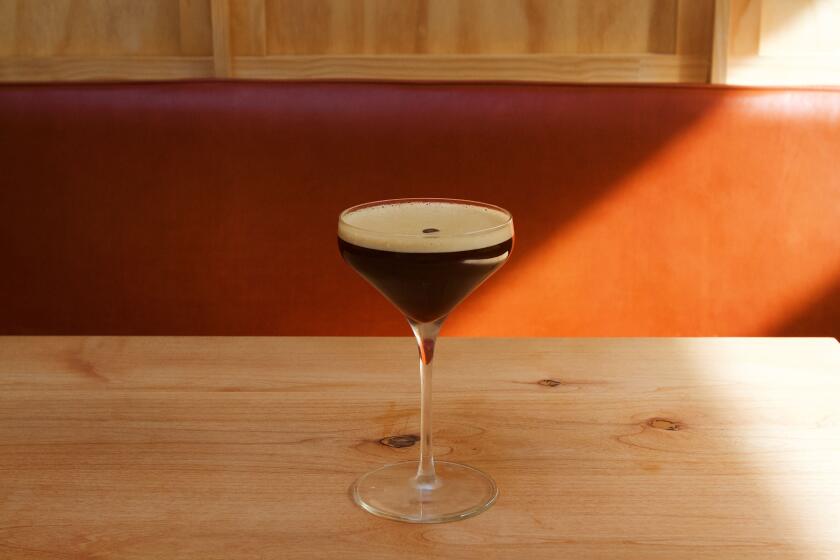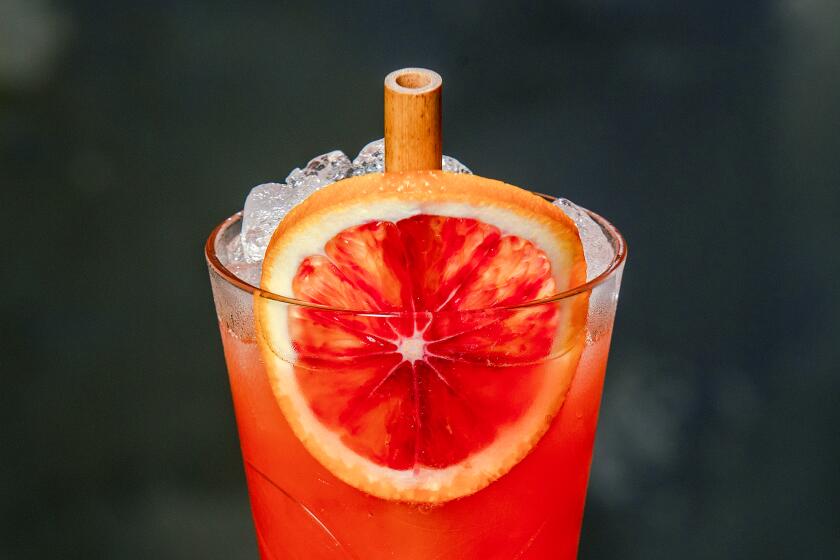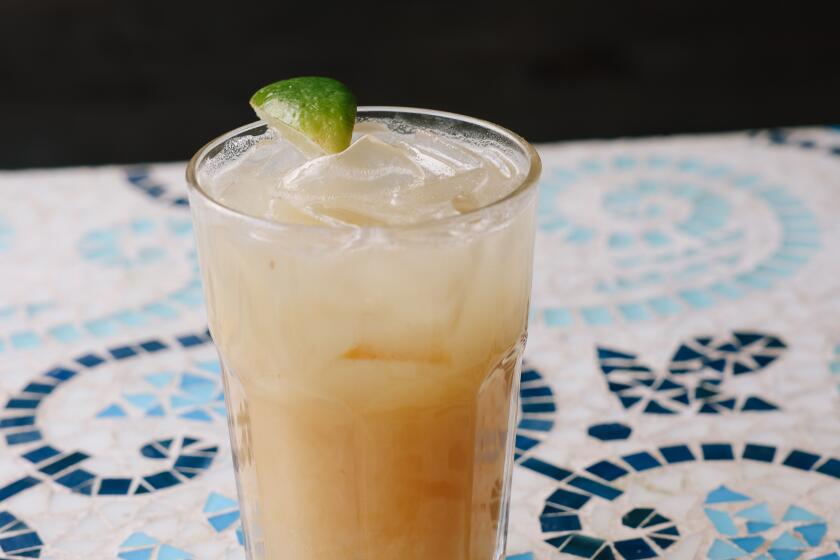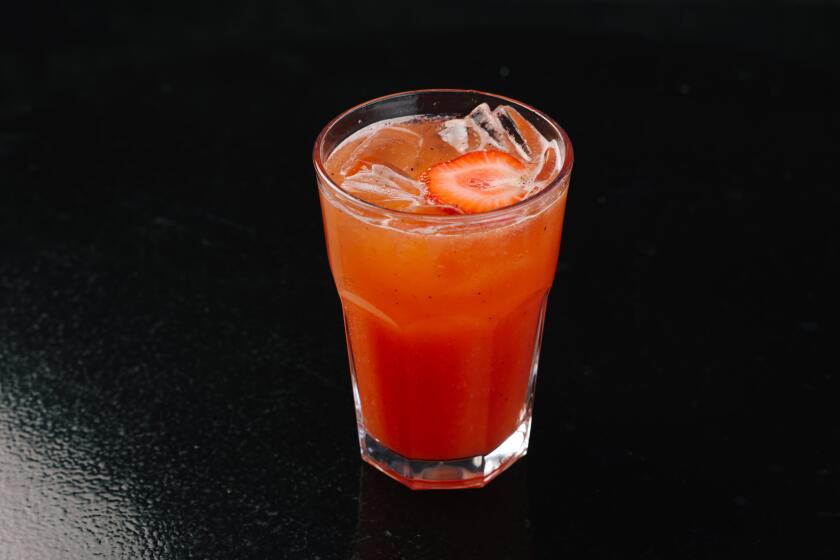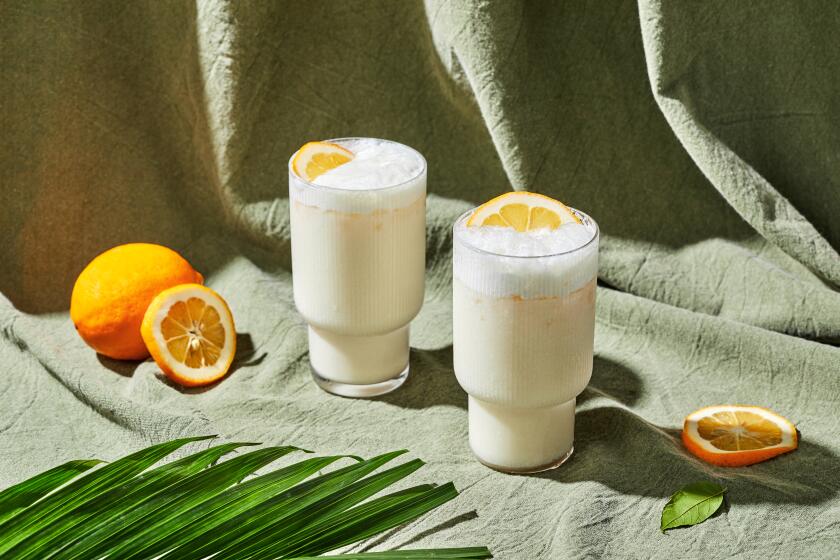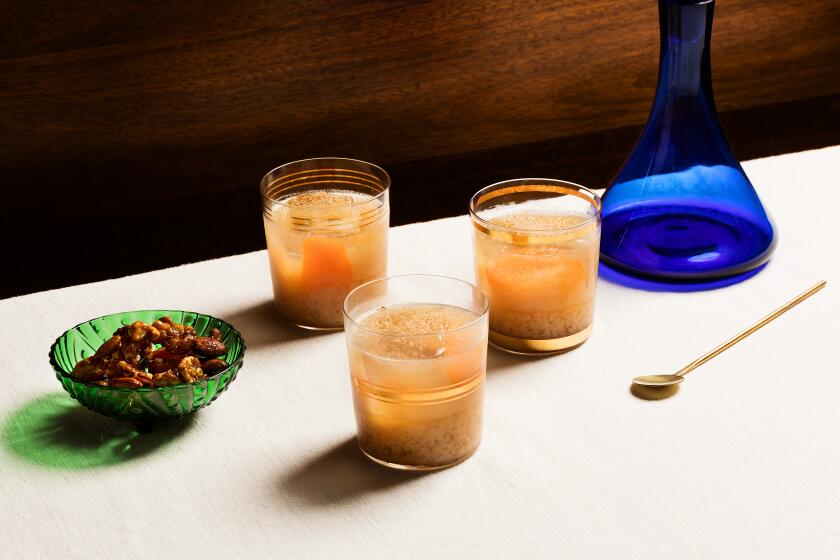Negroni
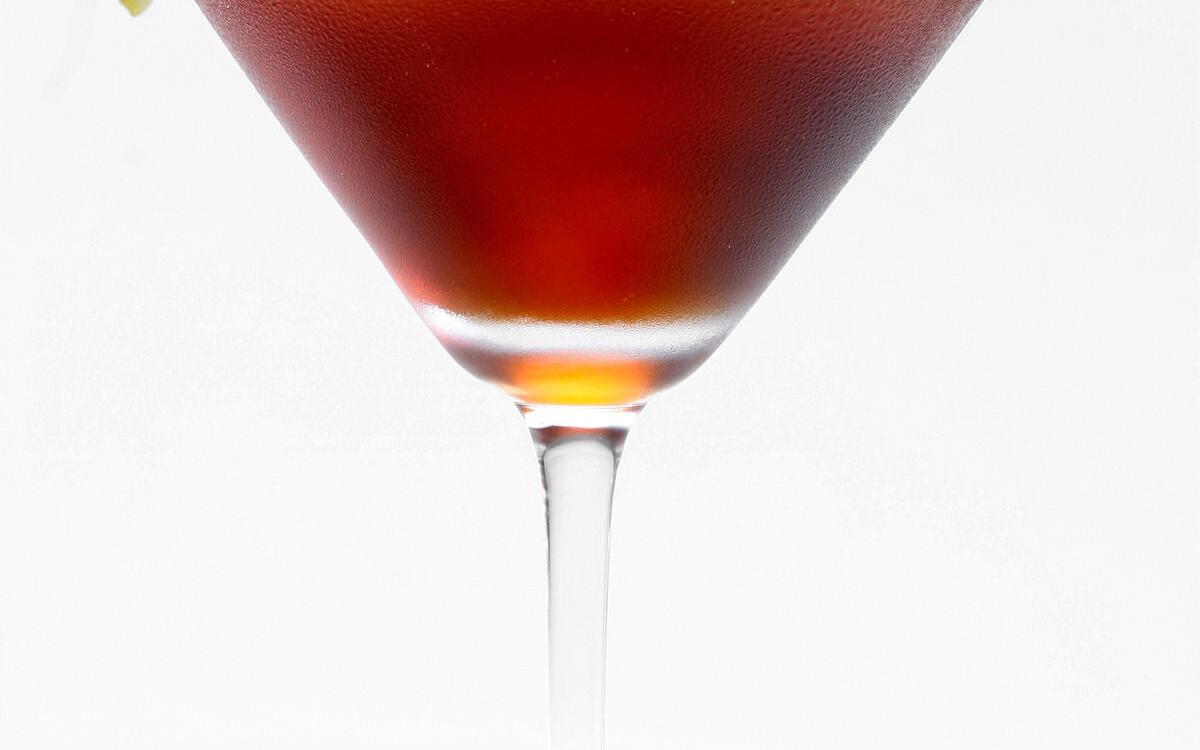
- Share via
Even as food has become a bigger part of the ritual of aperitivo in Italy, drinks will always be the essential ingredient. Coke does turn up on the occasional cafe table, but more often alcohol is involved. And it’s not always what you would expect.
Walk into the sleek new cafe called Circus at what Americans would consider happy hour and you’ll find a back wall arrayed with hard liquor of every description, but people at the bar drinking wine by the glass with their grissini and pistachios.
In the club district after 10 p.m., aperitivo might mean a beer, particularly local Menadea, or even a mojito. In many of the stylish cafes under the arcades lining every street in the center of town, you can order a glass of wine, a soda or an aperitivo della casa, a cocktail usually involving vermouth, the infused white wine that originated here more than 200 years ago. And if you mention aperitivo to anyone younger than 30, you’ll hear that a drink called a spritz is the ticket.
Mostly, though, what I drank and watched being drunk was that most Italian of elixirs: wine. And not Prosecco, the sparkling wine usually poured elsewhere in Italy. It makes sense, as you could indulge in aperitivo every day for nearly three years without ever repeating an Italian wine. (At a Slow Food cheese expo in Bra in September, close to 900 were available by the glass, because of course you can’t eat cheese without wine.) Just the Piedmontese varieties would keep you sipping for a couple of months.
Wine is clearly the drink of a new generation all through Italy. Stop in Veneto for an ombra, the local translation of aperitivo, and the food might be more ample and come at a price, but what is in the glass is wine, still or sparkling. Stop in a bar in a small town and take your choice of several varietals that once might have been held off until dinner. In Asti, the night of a palio, or horse race, through the town center, nearly everyone drinking had a wineglass in hand.
Vermouth and amari, as bitters are known, are also aperitivo possibilities, not just something to wave over a martini glass. Vermouth is essentially white wine infused with as many as 50 herbs, spices and other flavorings, and it has a mild but fascinating flavor that does seem to perk up an appetite.
You can drink sweet Martini & Rossi or Cinzano on the rocks or mixed with club soda in what Italians call a long drink, with an optional slice of lemon or orange to give it an even fresher flavor and vibrant fragrance. Martini & Rossi, either dry white or sweet red, is also superb chilled by itself, served like sherry.
Punt e Mes is a much more bracing option, with soda water or mixed into house cocktails with other bitters, such as Campari. It has a livelier and deeper flavor and finishes with a sharper edge.
Like so many aperitivo options, vermouth and amari have a relatively high alcohol content, 16% to 18%. But because the whole idea of food at aperitivo is to prevent the unthinkable in a culture obsessed with eating, a happy hour hangover is highly unlikely.
Campari, the great Italian bitters with quinine undertone, is apparently the Cosmo of Italy these days, though mixed either with club soda or in a Negroni, the classic cocktail made with gin and a drop of sweet vermouth. In cities and towns east of Turin, in Veneto, to the east, Campari is also the essence of aperitivo in the spritz.
Everyone makes it differently, but generally it’s nearly equal parts Prosecco and Campari, with a splash of sparkling water in a highball glass, garnished with a cocktail olive or a slice of orange or lemon. Two sips and you can understand why an Italian would say the spritz is so popular that “it has changed the destiny of almost-dead pubs and bars.”
The olive seems surreal, but it adds a seductively fragrant undertone. (An orange liqueur called Aperol is often used instead of Campari, intensifying the effect.) Somehow the bitterness of Campari in the sweetness of Prosecco may be the best appetite stimulant since the smell of sauteing garlic. After one, you’ll be ready for dinner.
Still, wine will always define aperitivo to me. What we mostly ordered were Piedmontese. Barbera and Dolcetto are the dominant reds, both very familiar in the United States, but much more diverse and affordable here. Both are easy to drink and ideal partners for the richness of the typical snacks.
The whites lean more toward Cortese, Gavi and Arneis, a wine that’s well worth seeking out. Arneis, traditionally a blending grape, is grown throughout the Langhe DOC region but does best in Roero, which was elevated this year to DOCG, Italy’s highest wine status. It’s now used primarily to make an elegant Chablis-style wine, which has had an increase in production in recent years. Arneis can be almost raspberry fruity to grapefruity tart, but it always resonates with cheese, salumi and other rich foods. All three of these Piedmont whites are light and crisp and vibrant, meant to be drunk young and often.
Sparkling wines are also lively pours for aperitivo and are omnipresent because Piedmont produces half of Italy’s entire output. On different stops we had either Moscato d’Asti, a round and fruity wine served in a flute, or spumante. Both at the source are worlds away from the cloying cheap wines exported in bulk. (We never had Prosecco, but weirdly, we were served Spanish Freixenet with our little panini and crostini in one bar, in Pollenzo.) Always, the effervescence counters the richness of typical bar snacks.
Finally, there’s the most fascinating crossover between still and effervescent: Brachetto, a bright red wine with subtle bubbles. When I have had it in the United States, it has seemed more suited to dessert. But where it is made, in the home of the aperitivo, it communicates best with the savory side.
Fill a cocktail shaker with ice. Add the Campari, gin and vermouth. Shake well. Strain into a chilled martini glass and garnish with a twist.
Get our Cooking newsletter
Get a taste of Los Angeles — and the world — with recipes and kitchen tricks from the L.A. Times’ Cooking newsletter.
You may occasionally receive promotional content from the Los Angeles Times.










